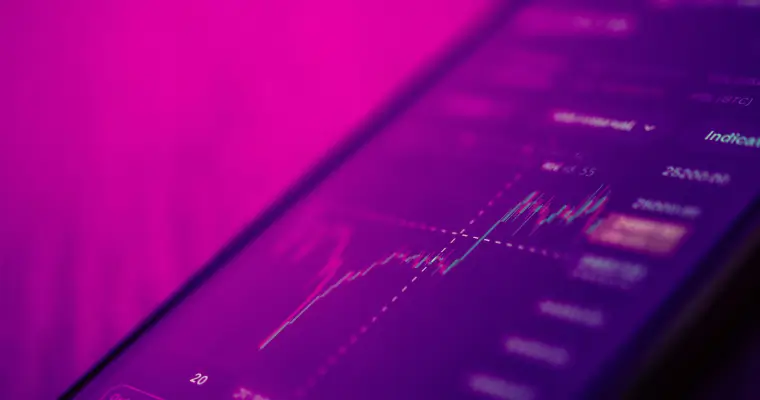The first thing you need to do to attract users to your crypto project is to gain their trust. Users want to be sure that the exchange is financially stable and that there are enough assets to match the balances of customers. At the same time, it is important that the exchange is secure and all processes are transparent.
An audit called proof of reserves (PoR) is a critical solution used to increase or restore user trust. It allows each user to easily check whether the bridge has enough assets. This audit utilizes cryptographic techniques. They show that customer funds are fully backed, all while preserving privacy and security.
In this brief, you will get an answer to the question of what is proof of reserves in crypto and find out how the PoR audit works. You will explore the core mechanisms behind crypto proof of reserves, the main challenges and limitations of PoR, and more. Let’s get started!
Proof of reserves: Definition and its importance
When running a crypto exchange, trust is maybe the best asset you can accumulate. Users now insist on undeniable proof that their funds are safe and fully insured. The proof of reserves audit crypto is an effective way to meet that need.
This audit enables your exchange to prove, with hard evidence, that all customer assets exist and are accounted for. PoR works through cryptography. It enables anyone to check that your exchange has enough crypto to settle user balances, without revealing private user data.
“Proof of reserves (PoR) is an independent audit conducted by a third party that seeks to ensure that a custodian holds the assets it claims to own on behalf of its clients.”– according to Cointelegraph.
Of course, the exchange can conduct proof of reserves crypto audit by itself. However, to increase trust on the part of users and third-party observers, it is usually recommended to engage independent auditors.
Implementing PoR isn’t a technical effort alone—it aligns with the reputation and advancement of your project.
Here are the key advantages of proof of reserve audit crypto exchange:
- Increases user trust Demonstrating that funds are completely supported enables users to trust your site and remain committed.
- Enhances transparency Crisp, auditable data allows you to be different within an industry notorious for a lack of transparency.
- Favors compliance With regulations expanding, PoR aids in proving that your exchange is compliant and audit-ready.
- Prevents liquidity issues and crises Regular proof of asset backing captures issues early and avoids liquidity issues.
- Attracts partners Institutions and companies prefer to partner with exchanges that show they are financially sound.
Proof of reserve crypto audits help your exchange gain trust, remain risk-free, and grow with confidence. It’s a step towards running a secure, stable, and professional platform.
The main mechanics behind the proof of reserves
So, what is meant by proof of reserves crypto audit? An external auditor or cryptocurrency exchange itself makes a snapshot of all the balances of user accounts and sums them up into a total. Then the auditor compares that data with the aggregate amount of money in the exchange’s blockchain wallets.
This information will be used to ensure that the exchange has enough assets to fully cover its customers’ money. The auditor must also verify that the exchange actually owns the wallets it presents as reserves.
To do this in a secure way, transactions typically use a Merkle tree, with the balance of each user hashed and stored at the leaf nodes of the tree (small data points that build the block of the tree structure). This allows for verification of the whole list of balances without compromising individual accounts.
Let’s take a look at the proof of reserves crypto exchange audit process itself and the mechanisms behind it:
1. User balance aggregation
The exchange takes the first step by taking a snapshot of all customer balances as of a certain time. This information is then structured in the form of a Merkle tree, a type of cryptographic data structure that enables the easy verification of large amounts of data.
Merkle trees simplify the process by allowing a single root hash to represent all the user balances, and that can be used to verify data integrity.
User privacy is maintained through this process since individual account balances are not disclosed. The root hash alone is made public in a way that it allows users to verify their own balance independently and confirm that it is part of the combined total.

2. Asset verification
In order to ensure that it has the assets to cover customer balances, the exchange makes public wallet addresses that hold the reserve funds publicly accessible.
Public blockchains enable anyone to access the wallets and check that the reserves are sufficient. The exchange will have to verify that the total on-chain crypto exchange reserves are equal to or more than the liabilities represented in the Merkle tree.
3. Cryptographic proof
Having data at hand, the exchange must provide cryptographic evidence that both individual users’ inclusion of their balances and the exchange’s solvency can be proven.
- Merkle proof The users can confirm their balance as part of the Merkle tree with a Merkle proof. This is done such that they confirm the corresponding hashes linking their balance to the root, ensuring their money is part of the aggregate.
- Solvency verification Users can also independently confirm that the sum reserve funds, held in the exchange’s on-chain wallets, are equal to or more than the total liabilities uncovered by the Merkle tree. This guarantees that the exchange is not short of funds.
4. Third-party audits (optional but recommended)
While the process above provides transparency, having an independent third-party auditor provides a layer of trust on top of it. The third-party auditor will conduct traders reserve reviews crypto exchange and the exchange’s financial records and verify that the Merkle tree is accurate.
Challenges and limitations of proof of reserves
PoR is a valuable means of adding transparency to the cryptocurrency space, but we can’t say this audit is without challenges and limitations:
Restricted scope
While proof of reserve audit crypto exchange can verify the balances of users and the solvency of the exchange, it may not provide a comprehensive overview of the exchange’s financial well-being. For instance, the audit may not account for off-chain liabilities such as loans or debts. But these liabilities may impact the overall solvency of the platform.
Lack of real-time monitoring
Crypto proof of reserves audits are done at fixed intervals. Thus, real-time monitoring of the liquidity of an exchange is challenging. This can be a problem when there is market volatility, when the solvency of an exchange may change in a flash.
Dependence on the exchange
The integrity of proof of reserves crypto exchange audits also continues to rely on the reliability of the exchange itself. If the exchange manipulates or fails to report accurate information, users will get a misleading view of the financial state of the platform.
Third-party auditing expense
Hiring third-party auditors is not free (from $5,000 to $50,000). It may lead to infrequent auditing, which would dilute the effectiveness of PoR for individuals who use small platforms.
Despite these challenges, PoR remains an essential facilitator of transparency and trustworthiness. Surely, to succeed in the long term, trust in an exchange also depends not only on crypto proof of reserves. The trust depends on the degree of security implemented by the platform to protect user funds and data.
The future of proof of reserves and transparency
In the near future, proof of reserves crypto exchanges will also experience fundamental changes. The following are the most critical trends that we can expect as the future of PoR:
- Tighter regulatory needs
- Real-time and automated audits
- Decentralized proof of crypto exchange reserves
- Enhanced interoperability
- Enhanced user verification devices
These advancements would have a powerful effect on how crypto exchanges operate and how users access them.
For example, with pressure from regulations such as Europe’s MiCA (Markets in Crypto-Assets) regulation, PoR may become obligatory for exchanges to establish financial solidity. With regulators such as the SEC (Securities and Exchange Commission) and FCA (Financial Conduct Authority) accelerating their scrutiny of crypto platforms, exchanges with PoR can stay ahead of compliance issues.
Real-time PoR audits provide a solution to one of the main issues of PoR today. Gemini and Binance are already testing technology that allows individuals to check crypto exchange reserves in real-time.
With increasing DeFi platforms, decentralized PoR systems are more and more feasible. Even platforms like Uniswap and SushiSwap already have the process in motion to develop means for allowing numerous independent validators to verify reserve status. This approach makes the system open and less susceptible to manipulation.
Finally, as crypto exchange proof of reserves becomes more widely used, simple-to-use verification tools will be developed. This means anyone can easily verify the solvency of an exchange.
For example, Chainlink’s proof of reserve oracles already provide exchanges with a secure method to post reserve data on-chain, and these tools are developing further. With time, they could be incorporated into crypto wallets so that users can easily check the solvency of exchanges through convenient interfaces.
Your path to a trusted crypto exchange starts with Peiko
Have a plan to start your own crypto exchange? With our white-label solution, you can have a fully branded platform up and running in 2–3 weeks.

Built for businesses that care about security, we provide top protection using Fireblocks custody, DDoS attack protection, and two-factor authentication. The robust security measures we implemented ensure user funds will remain safe.
Our solution is not just secure but also very scalable and adaptable. You control the code fully, which resides on your infrastructure, giving you complete control.
With real-time order matching, TradingView charts, and over 52 day-one trading pairs, the platform offers a streamlined and efficient experience. And with integrated liquidity from top providers like Huobi and B2C2, deep and active markets are assured.

Our white-label solution for exchanges is well-suited to grow and could be integrated directly with leading cloud providers like AWS, Azure, or Google Cloud.
Start your crypto exchange platform, establish user trust, and grow easily by applying our enterprise-ready solution!
Conclusion
Proof of reserves is a vital cryptographic mechanism. It proves the reliability, accountability, and transparency of cryptocurrency exchanges. Crypto exchange proof of reserves ensures your platform has 1:1 of funds up to user deposits. Conducting this essential audit, you will improve user trust in your crypto exchange platform.
Want to launch a robust crypto exchange with a focus on user trust, transparency, and compliance? Pick our white-label exchange solution with top security measures built in. Contact us to start the project today!
FAQ
Kraken, Binance, and BitMEX are among crypto exchanges that show publicly available PoR audits (or reserve verification).
This is a cryptographic mechanism. Through proof of reserves audit crypto exchanges can prove that they possess enough on-chain assets to cover all deposits of users.
Crypto exchange proof of reserves audits use Merkle Tree data structures. With these structures, it is possible to check the balance of the exchange and data integrity.
Users can prove ownership when they sign a message from the wallet holding their crypto. Also, users can apply a third-party audit to confirm holdings.
Yes, Circle, the issuer of USDC, offers monthly statements by independent auditors. These statements show that fiat reserves are equal to the outstanding USDC.









